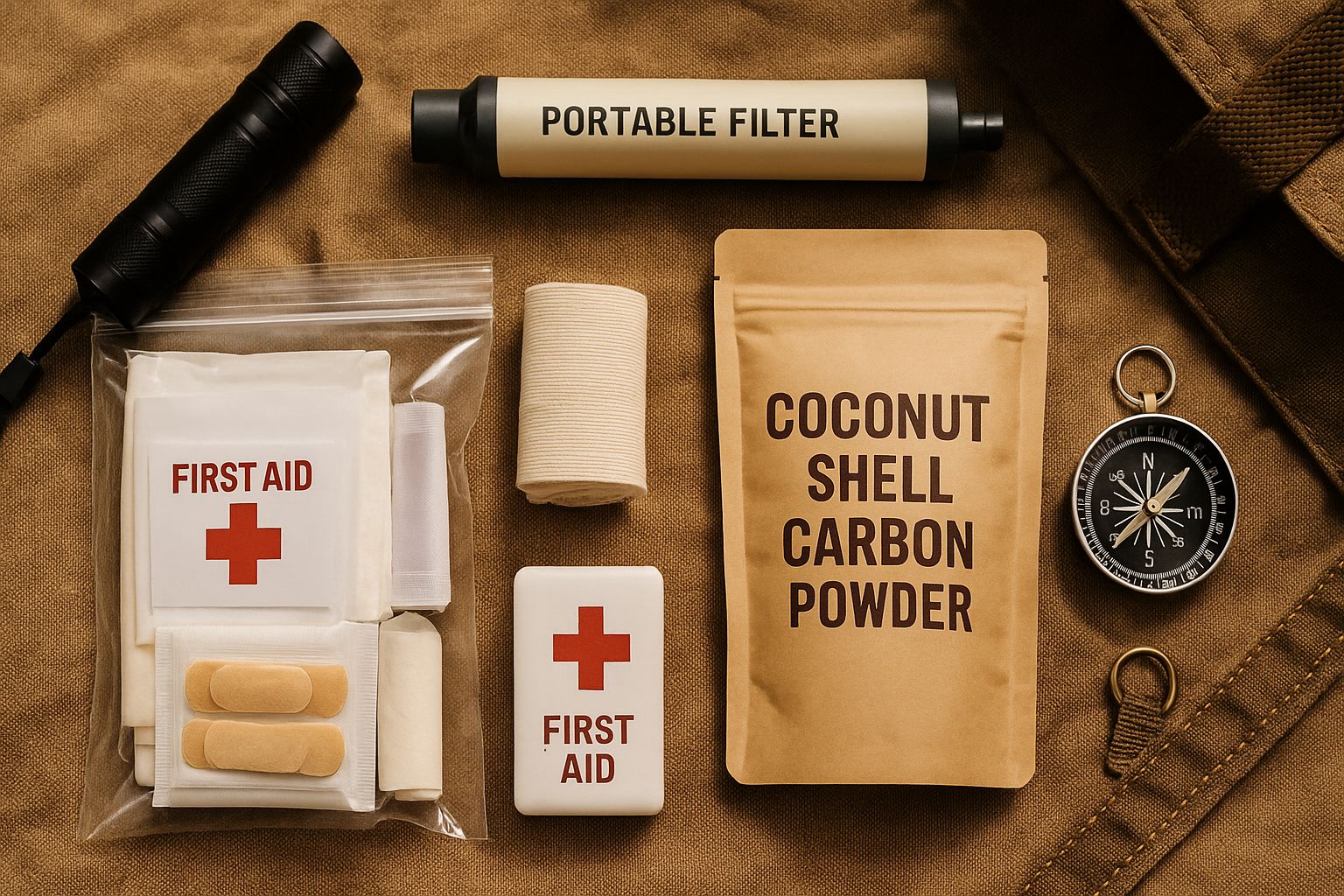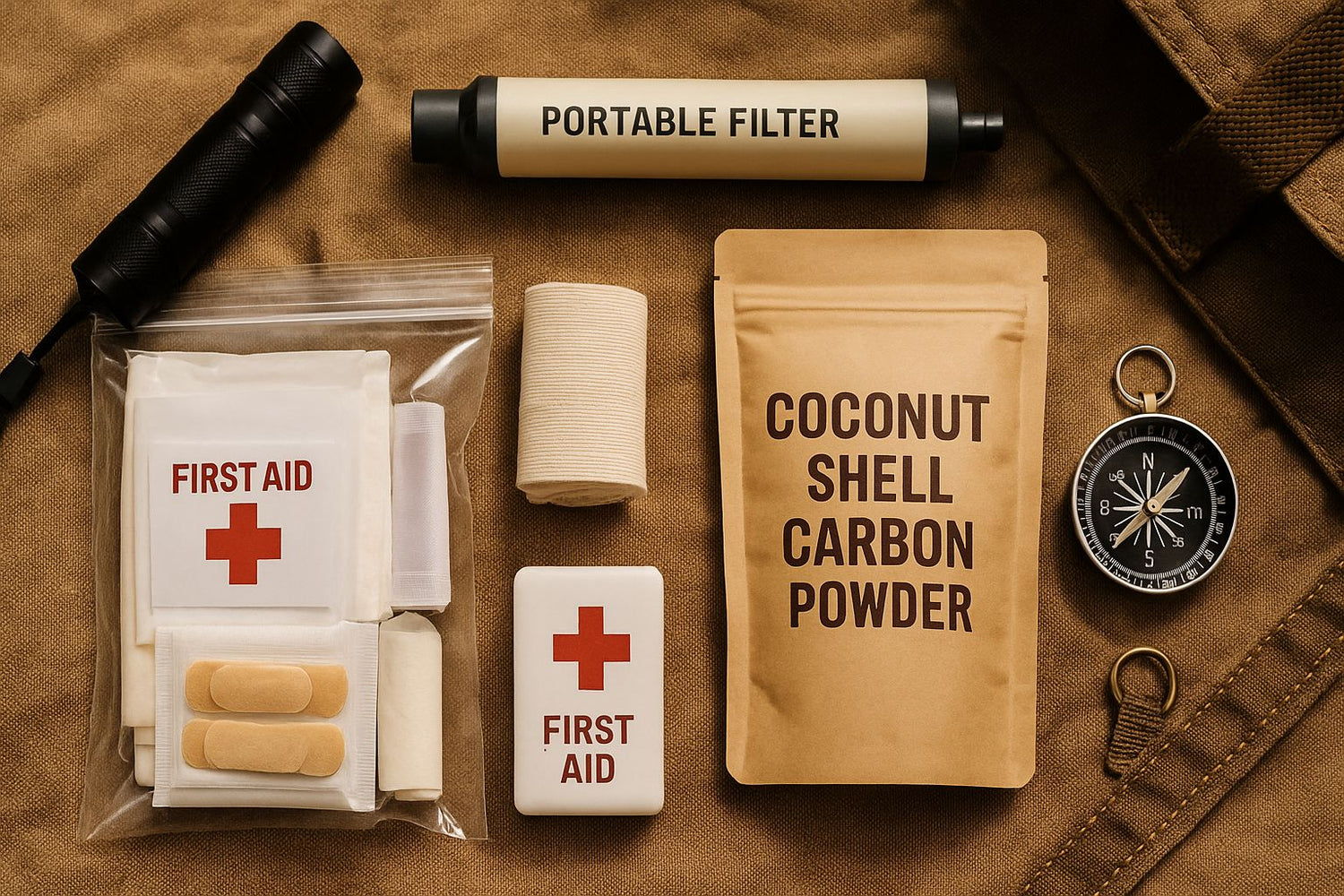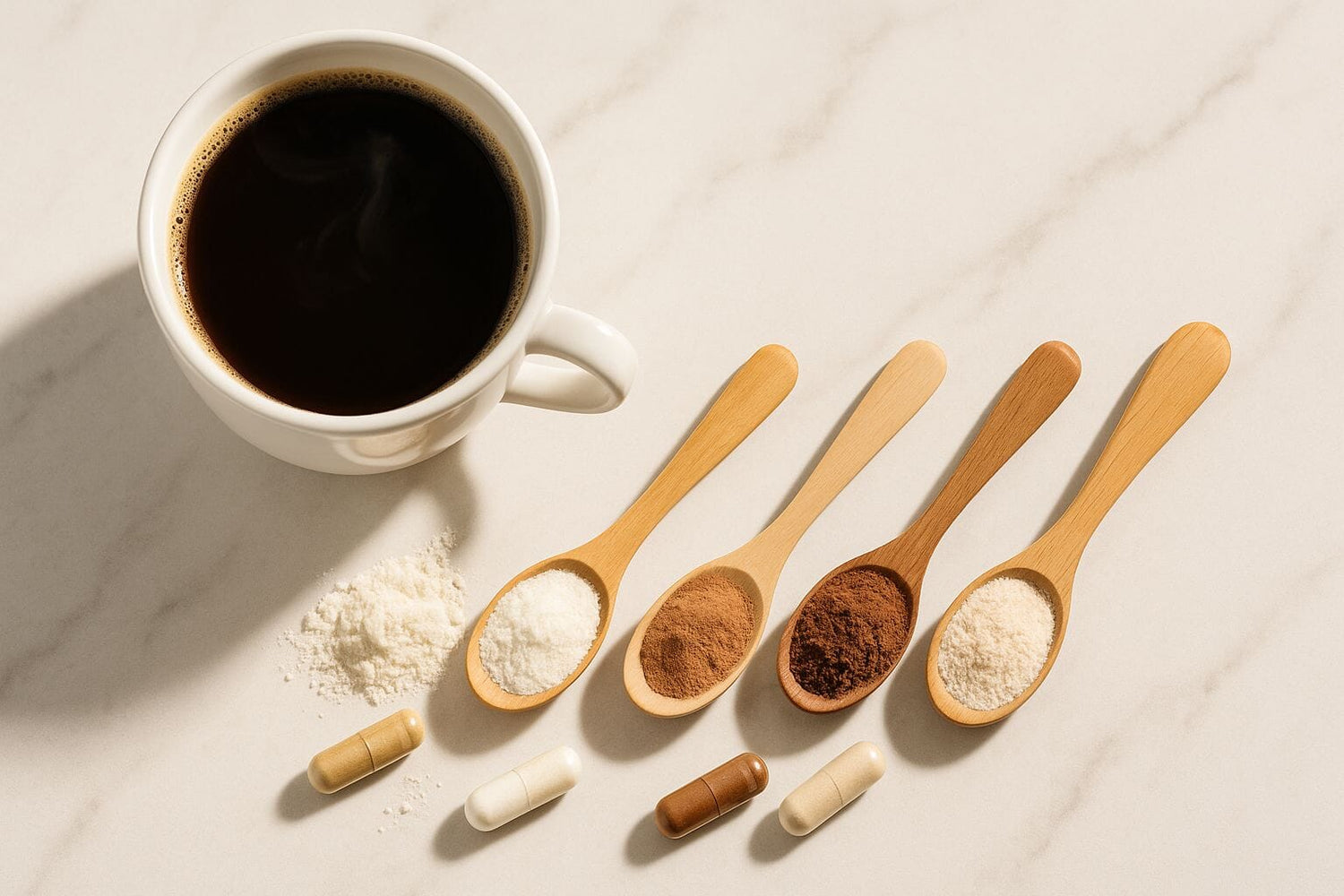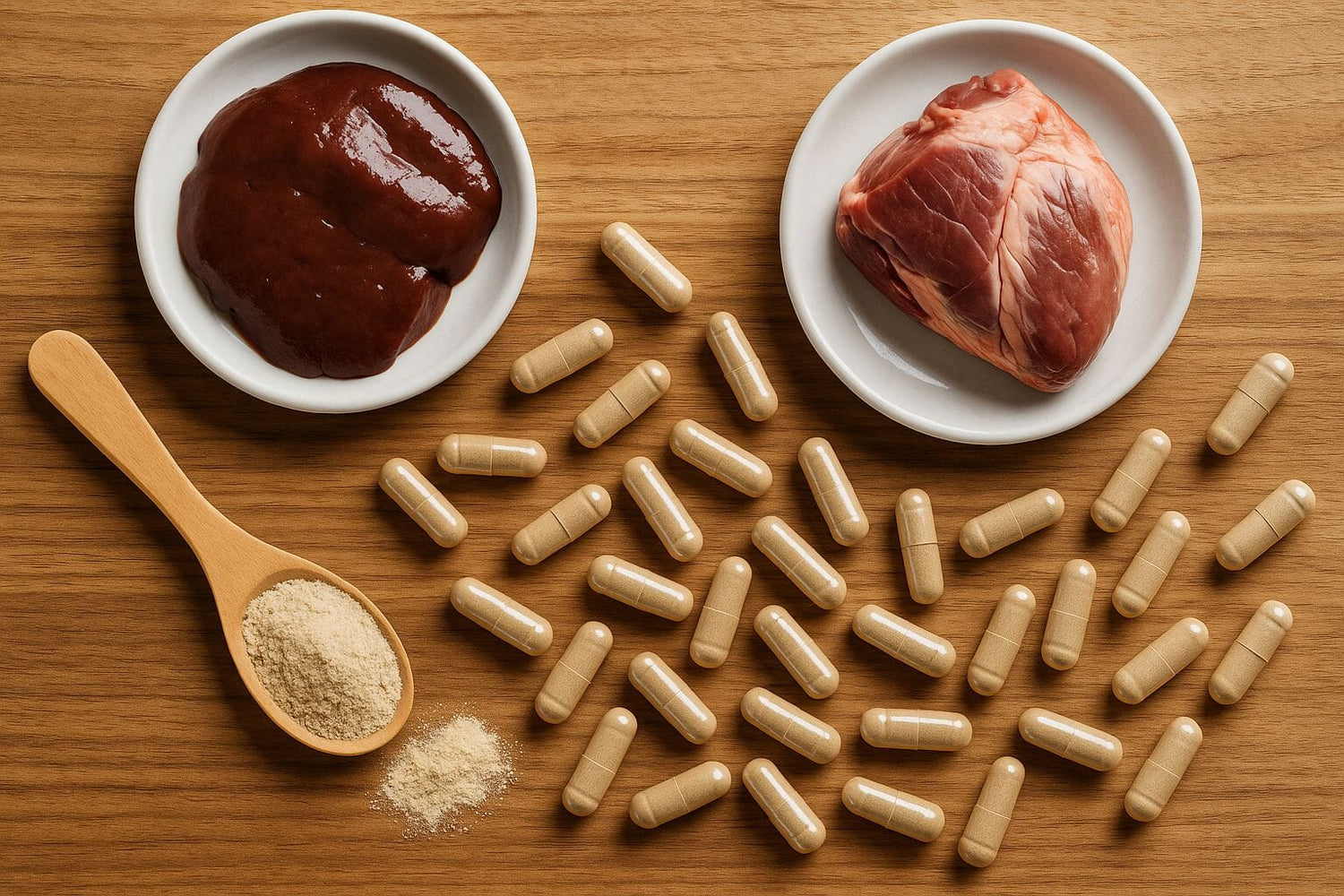When you think of coconut powder, breakfast smoothies or bakery ingredients might come to mind. But there’s a surprising application gaining real traction: using coconut-sourced powder, specifically activated carbon derived from coconut shells, for water filtration, especially in emergency kits and survival scenarios.
What Is Coconut-Sourced Powder for Filtration?

In many filtration systems, one of the key media used is granular activated carbon (GAC) made from coconut shells. These shells get processed (carbonized and activated) to become highly porous and efficient at adsorbing contaminants.
In other words, the “powder” here isn’t simply ground coconut meat or flour; this is specialized filtration-grade powdered or granular carbon derived from coconut shells, which acts as a filter medium rather than a dietary supplement. Because of its high adsorption capacity, this material is increasingly used in portable filters, backpacks, emergency kits, and off-grid water systems.
Why Coconut-Based Filter Media Works So Well
High Porosity & Adsorption
Activated carbon made from coconut shells offers an extremely high internal surface area, enabling it to trap organic compounds, chlorine, volatile organic compounds (VOCs) and odors.
Renewable & Eco-Friendly
Because it uses agricultural waste (coconut shells), it’s a smarter ecological choice compared to wood- or coal-derived carbons.
Suitable for Portable & Emergency Use
Coconut-derived activated carbon is lightweight, compact, and effective for survival filters or emergency water purification kits. For example, portable straw filters list “coconut shell activated carbon” as part of the multi-stage filtration media.
How It’s Used in Emergency Kits & Water Filters

-
Portable Straw Filters: Compact filters you can blow/suck through, often listing coconut shell carbon in their spec sheets.
-
Gravity Bag or Bag-to-Bottle Filters: A bag filled with water flows through layered media, including a coconut shell carbon stage to remove taste and chemicals.
-
DIY or Field Filters: In survival scenarios, the carbon powder can be used as a purification layer in a homemade filter (though proper preparation is required).
-
Emergency Kit Supplement: When building a prep-kit for natural disasters or remote travel, including a small sack of filtration media that contains coconut-based carbon gives you an added survival tool.
What to Look for When Choosing the Right Coconut-Based Filter Medium
-
Specification: Ensure the media is described as “activated carbon from coconut shell” or “coconut shell GAC”.
-
Mesh Size / Powder vs Granular: Powdered media can work faster, but may require support layers to avoid clogging. Granular tends to be used in cartridges.
-
Certifications & Testing: Look for filters or media that show weeding out of chlorine, VOCs, and odor. For emergency use, you’ll want evidence of performance.
-
Compatibility with Other Filtration Stages: Carbon alone doesn’t remove all pathogens; you still need a complete filtration/sterilization approach (micron filter, UV, boil water) for emergency preparedness.
-
Shelf Life & Packaging: Ensure the media is kept dry, sealed and stored in your emergency kit to maintain effectiveness.
Limitations & Safety Considerations
-
Not a pathogen killer: Activated carbon from coconut shells is brilliant for chemicals, taste, odor, but it does not reliably kill bacteria, viruses, or protozoa. For that, a separate purification step is needed.
-
Quality variation: Not all coconut shell-based carbons are equal. Production method, activation, and finishing matter. One overview warns: “inconsistent quality standards” remain a challenge.
-
False assumptions: Some might assume “coconut powder” means a dietary coconut powder that can be sprinkled into water. That’s not the case here. Make sure the product is a proper filtration media.
-
Replacement & maintenance: Filters or media have finite capacity. If you’re using it in an emergency context, plan for how you’ll replace or regenerate the filter media if needed.
How to Integrate Coconut-Based Filtration Into Your Emergency Plan
-
Build a multi-stage filter system in your kit: screen/grit removal → sand/gravel (optional) → coconut shell activated carbon → fine micron or sterilization layer.
-
Include clear instructions and spare media/pouches in your kit.
-
Regularly test your filter system (in a non-emergency setting) so you’re familiar with how it works.
-
Store the carbon media in a dry, sealed container to keep it ready for use.
-
Label your kit: “Use coconut shell carbon stage before UV/boil step” to avoid misuse.
-
For travel or remote hiking, carrying a small bag of coconut-based carbon media can be a lightweight boost to your safety.

FAQs
Q1. Can I just add the coconut powder directly to water for purification?
A: No. Standard coconut shell activated carbon needs to be used as a filter medium (water passes through it), not added like a soluble powder. Doing so could leave carbon particles in your water and won’t reliably remove pathogens.
Q2. Does coconut shell carbon remove heavy metals?
A: It’s effective at removing many organics (chlorine, VOCs, taste/odor) and some chemicals. For heavy metals, other media (e.g., ion-exchange, reverse osmosis) are usually needed.
Q3. How long does the media last once deployed?
A: It depends on flow rate, contaminant load, and usage. In emergency use, treat it as single-use or limited-use and monitor taste/flow.
Q4. Is it allergenic if coconut-derived?
A: The activation process generally removes allergenic residues, but if you have a severe coconut allergy, consult the manufacturer's data and test cautiously.
Q5. Can I buy this media separately for DIY filters?
A: Yes, some companies sell “coconut shell GAC” or “activated carbon from coconut” for water filtration. Always check mesh size and suitability for mobile/emergency use.
Q6. Should this replace boiling or UV in emergencies?
A: No. Think of it as part of your water-safety arsenal, not the only step. Combine with sterilization (boiling, chemical, UV) for best protection.
Conclusion
When you next build or refresh your emergency kit, consider the power of the little-known but highly effective tool: coconut-sourced powder/activated carbon. Because it offers eco-friendly, lightweight, and high-performance filtration for many contaminants, it stands out as a smart inclusion in survival and preparedness gear. Just remember, always pair it with pathogen-control steps, use high-quality media, and integrate it into a broader water-safety plan. The unexpected utility of coconut shell carbon might just make the difference when clean water becomes a crucial necessity.





